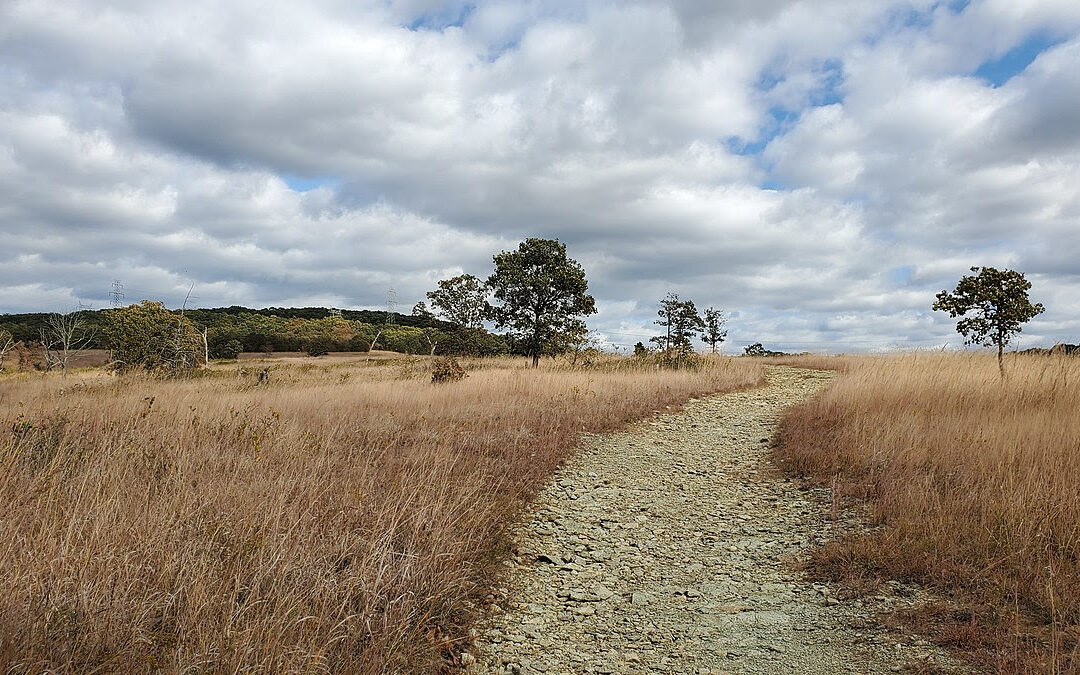Soldier’s Delight Natural Environment Area
Written by Mike Bonnell
Soldier’s Delight Natural Environment Area in Baltimore County is one of the most unique areas in Maryland. Home to rare and endangered species, as well as one of the rarest habitat types in the state, a Serpentine Barren. Seemingly harsh and hostile “barrens” are one of the prime examples of important habitats that support Maryland’s biodiversity. Rare butterflies and dragonflies live amongst jagged, rocky terrain with native prairie grasses and asters, and this designated Natural Area has hiking trails that allow the public to view the amazing nature found here. However, the area and the beautiful species that call it home are at risk. Soldier’s Delight and other state land in Maryland is currently considered protected. However, protections for state land don’t always sufficiently cover the breadth of species and features found in specialized habitats and other important places. The state needs a program that truly preserves these native species and features for the enjoyment of all in the future.
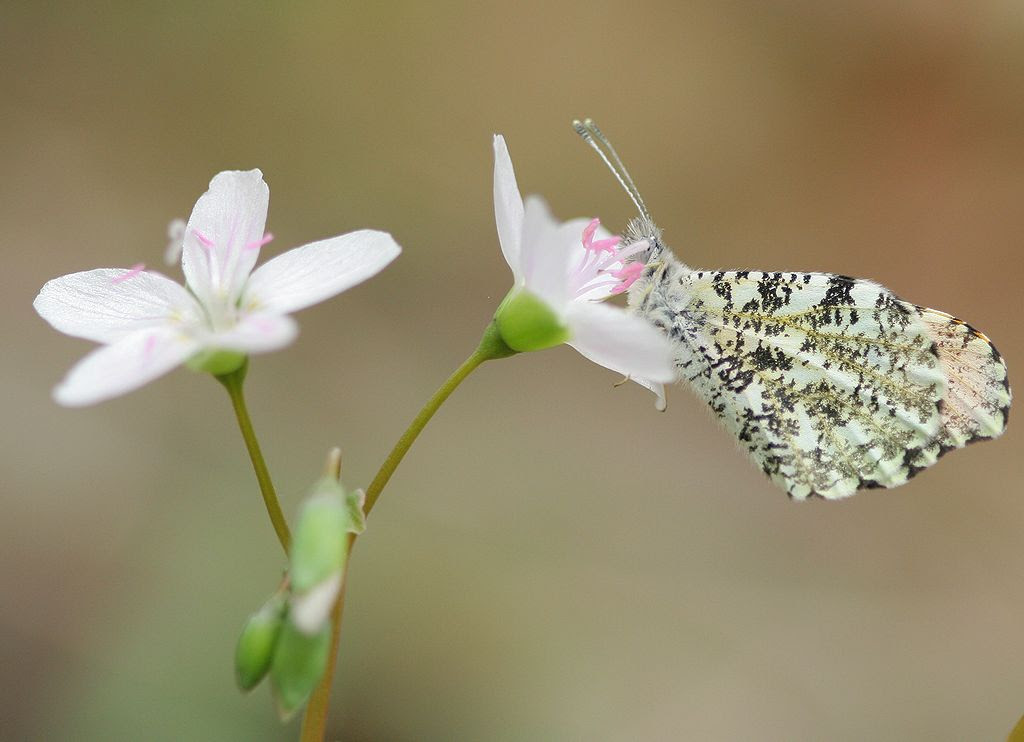
The falcate orangetip can be found at Soldier’s Delight.
My name is Mike Bonnell, and I am the Chesapeake Conservation Corps Member that has been working with the Chesapeake Conservation Partnership (CCP) since August 2022. As part of my year with the Corps, I undertook a capstone project that advanced both my own interests and those of the organization at which I was placed. For my project, CCP Program Manager John Griffin connected me to the Wildlife & Heritage Service (WHS) at the Maryland Department of Natural Resources (DNR). At the WHS, I joined an amazing team of employees working on a project known as Irreplaceable Natural Areas. The long-term outcome of the project will be the further conservation of unique natural areas in Maryland like Soldier’s Delight for the benefit of generations to come.
Maryland’s 2022 General Assembly created the Irreplaceable Natural Areas program with the passage of HB784. This bill provided for legal recognition of the habitats of state-listed threatened and endangered species, as well as unique or significant natural communities and ecosystems, found on lands owned and managed by the Department of Natural Resources. Prior to this bill, the state had no legal designation for natural areas, although larger areas meeting certain criteria have been designated as Wildlands on DNR lands. The resulting supportive regulatory package submitted in the spring of 2023 was built upon the existing inventory of the threatened, rare, and endangered species habitats and prime examples of ecosystem types native to Maryland on state lands, an effort that has been ongoing since 1979. The inventory would be used to designate unique and significant Natural Areas as Irreplaceable, and prescribe specific management activities to protect the areas even further. The presence of incredible rare species like the hellbender (a giant aquatic salamander) and the black rail (a marshbird) contribute to an area being considered Irreplaceable.
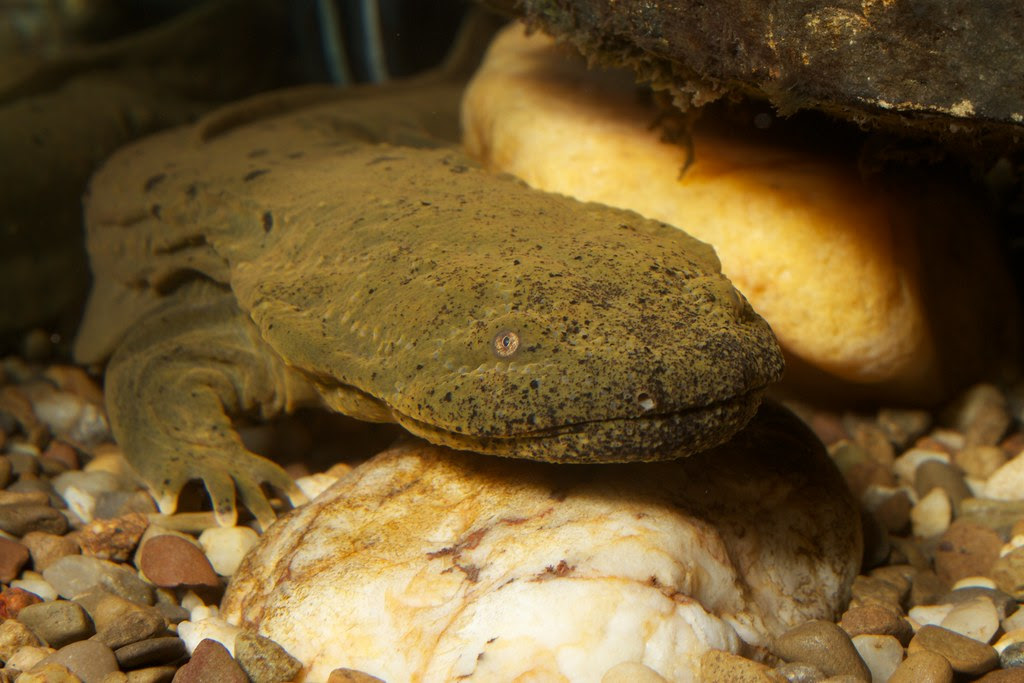
The hellbender salamander, a rare species that contributes towards an area being listed as Irreplaceable.
For my project, I participated in the drafting of over 75 text descriptions of Maryland’s Natural Areas. Areas were selected based on either the identification of rare species, or the presence of a pristine and unique habitat in Maryland. These text descriptions exhibited different natural areas, their key wildlife habitats, what rare, threatened, or endangered species lived there, and the ecological significance of the area. I also identified the threats and management considerations for these natural areas as well as incompatible and compatible activities.
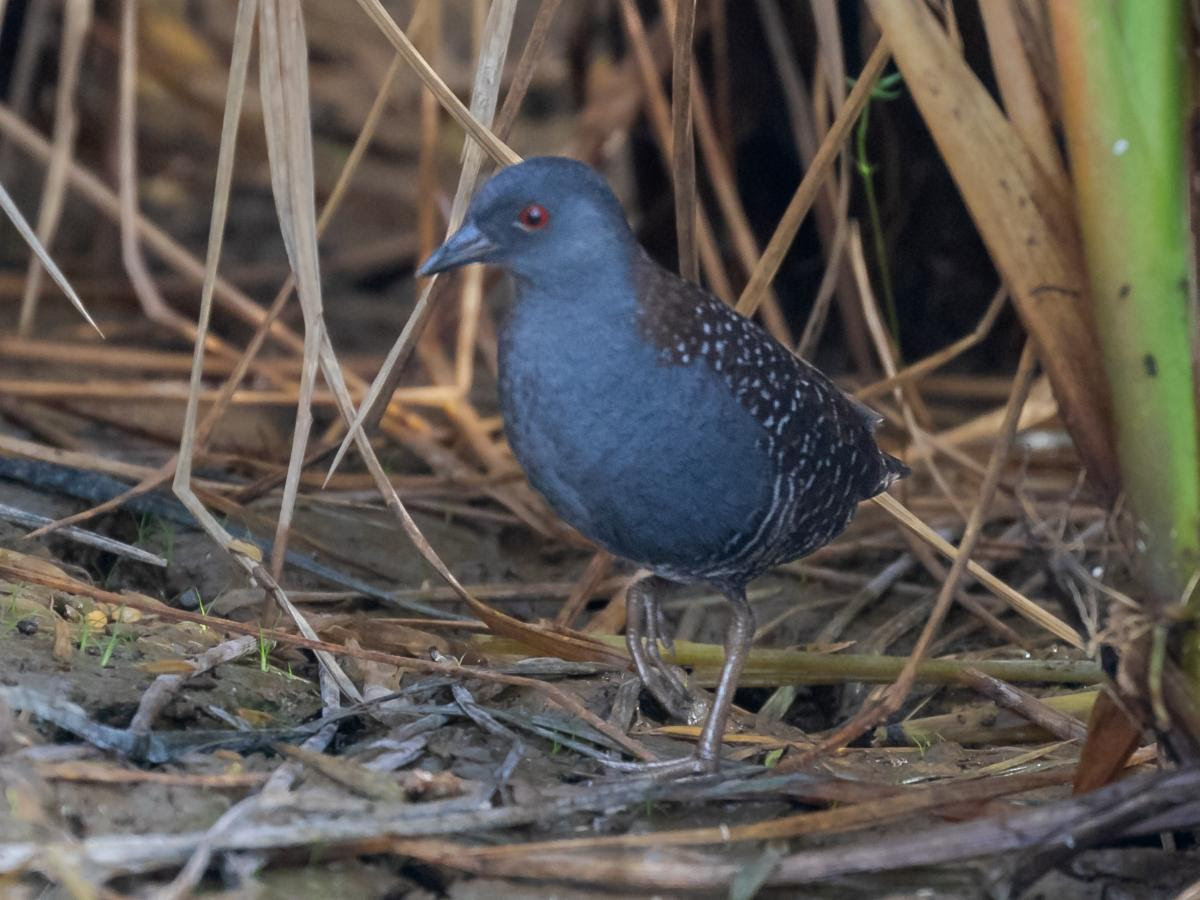
The black rail, another rare species found in state Natural Areas
Determining the inventory of species and habitats on state lands involved getting knee deep in existing DNR documentation resources. Some descriptions of extremely biodiverse areas, such as Soldier’s Delight, already existed, and needed minor updating and text revision. However, some areas were known by name only, and needed more investigation. For those areas, I was able to delve into DNR archives consisting of hand-drawn maps and other site descriptions. Investigating that documentation, I was able to determine the habitat and species on site that were vital to report on for protection. In addition, I used extensive online resources like the NatureServe Explorer, a definitive source for information on rare and endangered species, for confirmation of species names and conservation significance.
Special attention was also required given the presence of Forest Interior Dwelling Species of birds (FIDS), as well as specific endangered species such as the Allegeny woodrat, or specific habitats such as groundwater-interfacing wetlands found on the Eastern Shore. The presence of these particularly rare or special features required precise qualifying language to outline protection efforts.
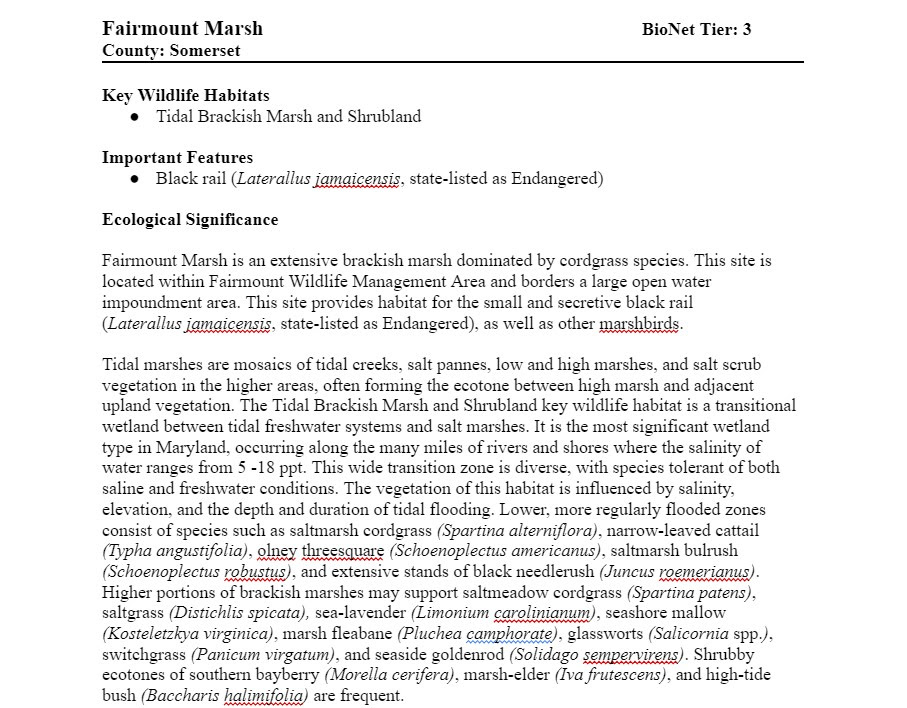
An example of an Irreplaceable Natural Area writeup, including text specific to the tidal marsh habitat of the Eastern Shore.
My text descriptions were compiled and reviewed by Wildlife & Heritage Service staff, and the inventory of all 300+ Natural Areas was then packaged and used to create the regulations leading to protection. Working on this project was an amazing opportunity and contributed to the further protection of state land in the beautiful Chesapeake Watershed. I’d like to thank Jonathan McKnight and Lynn Davidson at the Wildlife & Heritage Service for their work and support. Areas like Soldier’s Delight are home to the species and habitats that make Maryland special, and require the utmost care and attention, so we don’t lose them.
At the Chesapeake Conservation Partnership, protecting large landscapes to get to 30% of the watershed conserved by 2030 is a priority. However, so is making sure that land is protected for the right reasons and remains protected for the biodiversity and ecosystem services the land provides.
- Veggies via Wikimedia Commons
- Megan McCarty via Wikimedia Commons
- Brian Gratwicke via Openverse
- Hector Bottai via Wikimedia Commons
- Mike Bonnell
Lightning Update is a regular communication of the Chesapeake Conservation Partnership. Any opinions expressed are those of the authors and do not necessarily reflect positions of the Partnership or member organizations.
To share a success story, news, or important event, send your information to:
Support for the Chesapeake Conservation Partnership is provided by:
National Park Service Chesapeake
EPA Chesapeake Bay Program
USDA Forest Service
Pennsylvania Department of Conservation & Natural Resources
Maryland Department of Natural Resources
Virginia Outdoors Foundation
US Fish & Wildlife Service
Chesapeake Conservancy
The Chesapeake Conservation Partnership is co-convened by:




